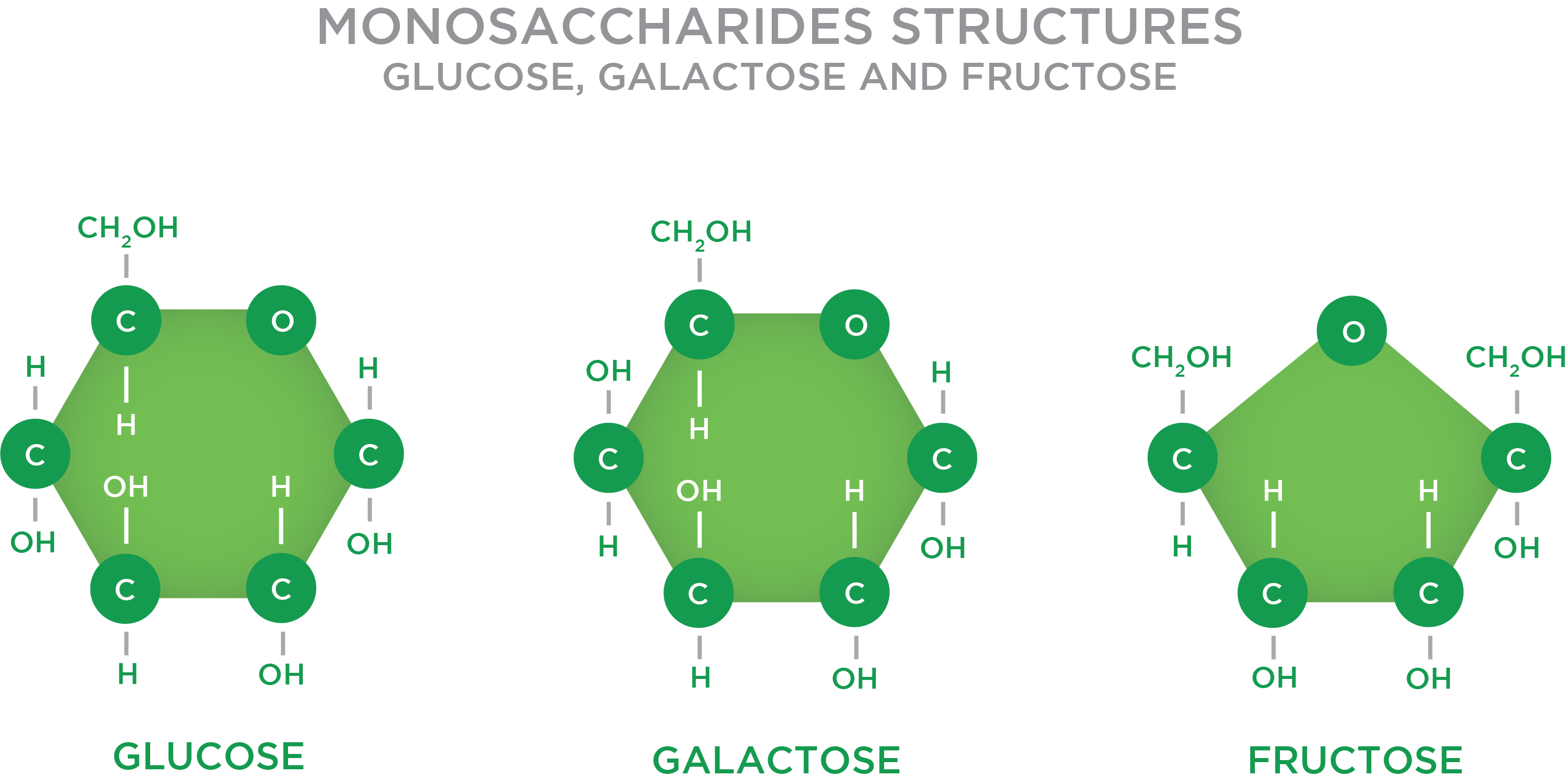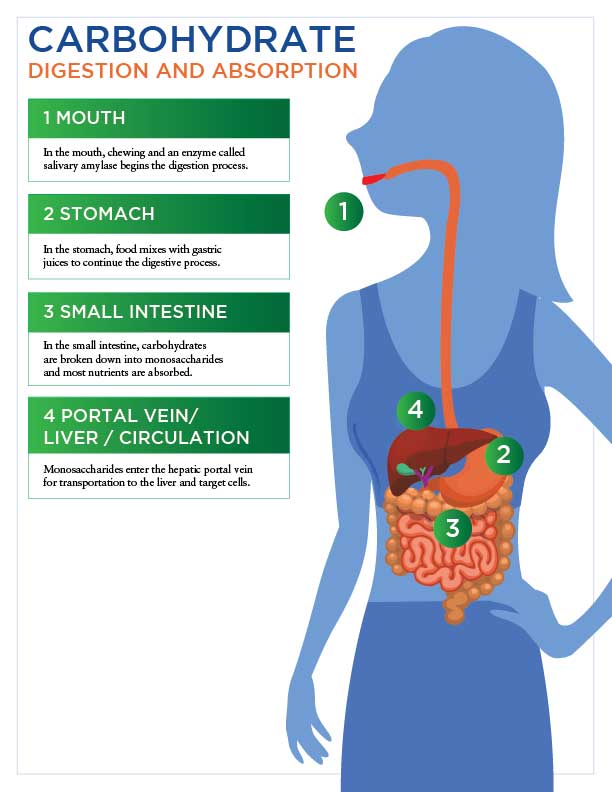Ch 7 : Carbohydrates
- Carbohydrates are often referred to as sugars and starches
- monosaccharides or single sugar units
- disaccharides or paired sugar units
- polysaccharides, which represent longer sugar unit chains
- oligosaccharides, also exists, containing 3 to 10 sugar units
- Simple Sugars : monosaccharides and disaccharides
- Complex Carbohydrates : polysaccharides and oligosaccardes
- Our digestive process breaks down our digestible complex carbohydrates to their building blocks: the monosaccharides that are then absorbed into the body. Once absorbed, carbohydrates can be used immediately as a source of fuel or can be stored as glycogen in specific cells.
- The largest storage depots for carbohydrates (glycogen) are the muscle and liver cells
Monosaccharides
Monosaccharides represent single-sugar units and the only absorbable form of carbohydrates
Three common monosaccharides in humans : glucose, fructose and galactose
same molecular structure of C6 H12 06

Disaccharides
- Disaccharides are comprised of three nutritionally important molecules: sucrose, lactose, and maltose
- Sucrose is comprised of one glucose molecule joined with one fructose molecule. Examples include cane sugar, brown sugar, and date sugar. Sucrose contributes as a primary sugar in most fruits.
- Lactose is comprised of one glucose molecule joined with one galactose molecule. It is only found in dairy products.
- Maltose is comprised of two glucose molecules. Examples include corn syrup, brown rice syrup, and black treacle.
- All added sugars, regardless of their source, are either monosaccharides or disaccharides
Oligosaccharides
- Oligosaccharides are largely resistant to digestion because the human digestive tract lacks the necessary enzymes that can chemically break down many of these structures. This allows them to pass to the large intestine where intestinal bacteria act on them.
- These are touted for their health benefits and typically probiotics
Fibre
Soluble Fibre : they either dissolve or swell when placed in water and most can be digested by the bacteria living within the large intestine
Some benefits of soluble fibre are :
- Weight loss — It can delay gastric emptying (from the stomach) and it promotes an overall feeling of fullness, thereby potentially reducing caloric intake.
- Reducing risk for cardiovascular disease — It can bind to cholesterol particles. It can prevent its absorption and help remove this compound from the body.
- Bowel movement and intestinal health — It attracts water and it promotes bulk to the stool, which can safeguard against constipation.
- Diabetes protection — This carbohydrate is not absorbed. It can, therefore, reduce potential blood sugar spikes.
- Improved absorption of foods — It slows the movement of food through the small intestine. It can enhance nutrient absorption.
Insoluble Fibre : they do not dissolve in water and are not easily digested by intestinal bacteria.
Some benefits of insoluble fibre are :
- Enhanced digestive health
- Reduced risk of cancer
- Possible weight loss
The Anatomy of the Grain
- The kernel consists of three parts: the bran, germ, and endosperm.
- The bran is the outermost layer of the kernel and is designed to protect the kernel from the environment. It contains B vitamins, antioxidants, and fibre.
- The germ is the embryo of the kernel and contains B vitamins, minerals, some protein, and healthy fats.
- The endosperm is the largest portion of the kernel. It contains starchy carbohydrates, some protein, and small amounts of vitamins and minerals.
- During most refining processes, the bran and germ are removed from the kernel. As such, much of the fibre and nutrients are lost.
- Despite the many benefits associated with fibre intake, the current intake of fibre in the US population falls short of the recommended intake discussed later in this chapter.
The Role of Carbohydrates in the Body
- The primary role of dietary carbohydrates is to provide energy for the body.
- Any excess carbohydrates not used for immediate energy production can be stored as glycogen within the muscle and liver.
Carbohydrate Digestion

What is the recommended amount of added sugar suggested by the American Heart Association for American adult women?
- A limit of 6 added teaspoons
What glycemic score ranks a carbohydrate food as a medium GI food?
- GI score between 56 and 69
Which polysaccharide is digested fastest?
Amylopectin
\n
\n